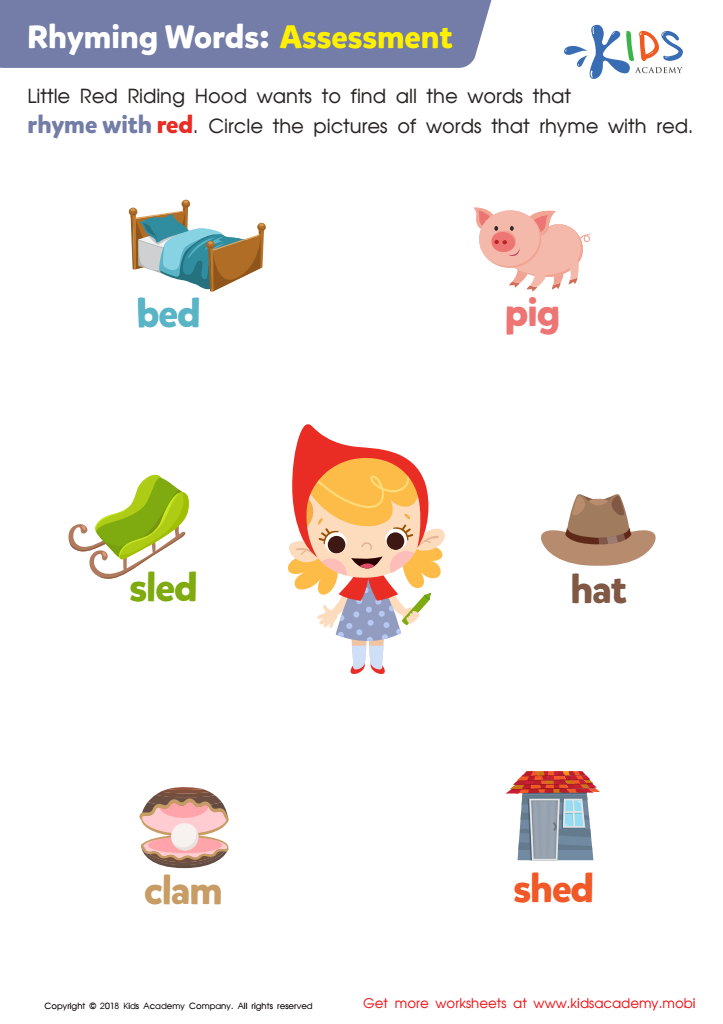Normal Rhyming worksheets activities for Ages 4-6
1 filtered results
-
From - To


Rhyming Words: Assessment Worksheet
Normal rhyming worksheets activities play an instrumental role in enhancing various skill sets in students, particularly in their early educational years. These activities are not only engaging but also significantly beneficial for linguistic development, phonemic awareness, and reading skills. Let's explore why incorporating normal rhyming worksheets activities into the learning curriculum is a smart educational strategy.
Firstly, normal rhyming worksheets activities foster phonemic awareness. They help children recognize and work with sounds within words. As students engage with rhymes, they learn to identify sound patterns, an essential skill for decoding words. This awareness is crucial for developing reading skills, making these activities an invaluable tool in literacy education.
Moreover, these worksheets enhance vocabulary and language skills. Through rhyming exercises, children are exposed to a variety of words, many of which they might not encounter in daily conversations. This exposure broadens their vocabulary, helping them express themselves more clearly and understand more complex texts as they progress in their education.
Additionally, normal rhyming worksheets activities boost memory and cognitive skills. Rhymes are easier to remember than non-rhyming text, allowing children to retain new vocabulary and concepts more effectively. This aspect of rhyming makes learning a more enjoyable and less daunting task for young learners.
Furthermore, these activities promote creative thinking and writing. As children experiment with rhymes, they learn to play with language, exploring how words can be manipulated to create meaning, rhythm, and beauty. This exploration can inspire a love for poetry and literature, laying the groundwork for a lifelong appreciation of the arts.
Finally, normal rhyming worksheets activities are inherently fun and engaging. They provide a break from the monotony of traditional learning methods, keeping students motivated and eager to learn. The enjoyment derived from rhyming exercises can lead to a positive attitude towards learning in general.
In conclusion, normal rhyming worksheets activities are more than just an entertaining educational tool; they are a multifaceted approach to learning that supports linguistic development, cognitive growth, and creative expression. Integrating these activities into the curriculum can significantly enhance the educational experience for young learners, setting a solid foundation for their future academic endeavors.

 Assign to the classroom
Assign to the classroom




%20(1).jpg)







